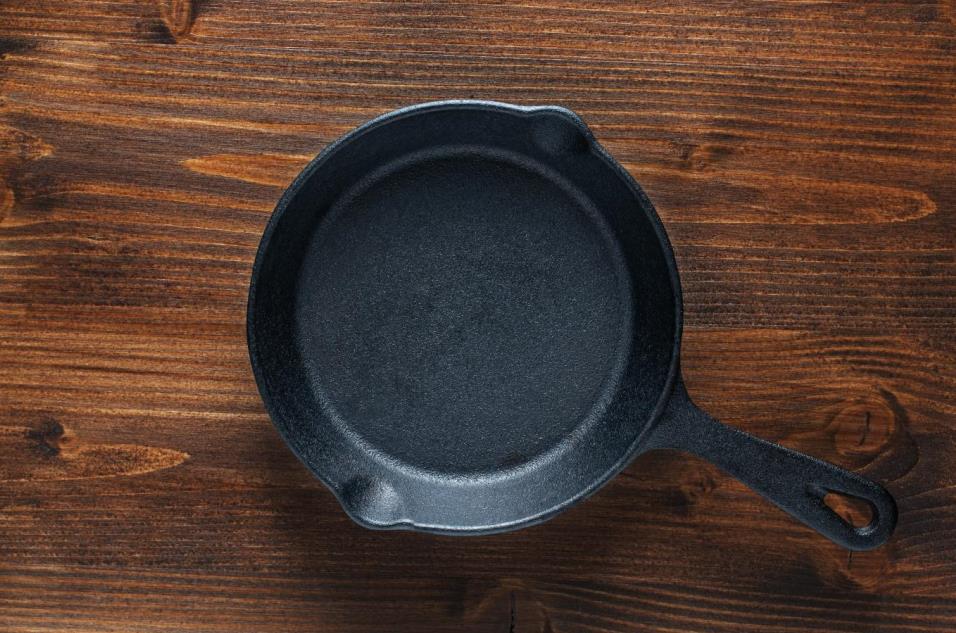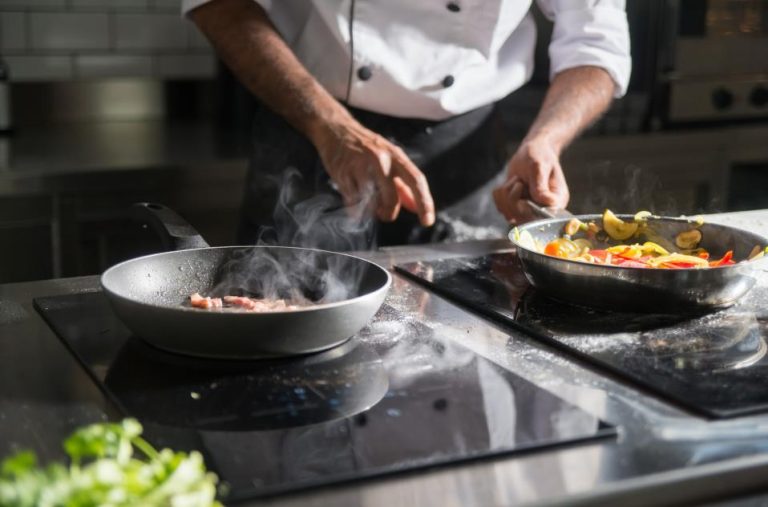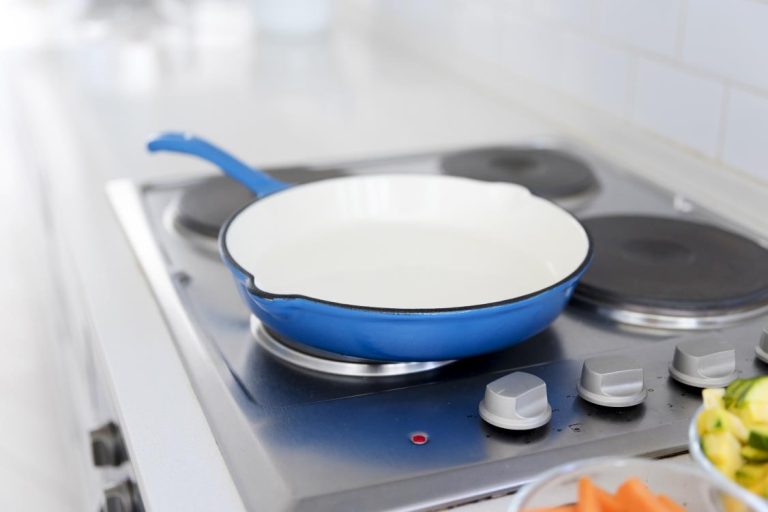Cast iron skillets have been renowned for their ability to sear and brown foods. They are highly durable and accomplish tasty meals with their superior ability to retain heat. These cooking instruments have been around for centuries, with the use of cast iron cookware dating back to 200 BC.
The core principles of making a cast iron skillet haven’t changed much. It’s the same as it was thousands of years ago. In short, the molten metal gets poured into a mold in the shape of the desired skillet. The tools utilized for this process got more sophisticated over time, but the fundamentals are still the same.
This article will guide you through how cast iron skillets are made in today’s manufacturing. Read to the end to discover how these such staples in kitchens are made, from casting to how manufacturers perfect the end product for the user.
Introduction to how cast iron skillets are made
Cast iron skillets follow a different manufacturing method than non-stick, stainless steel, aluminum, and copper cookware. Instead of cutting the material into the shape of the cookware from a large sheet, the metal is melted and poured into a mold, hence the name.
As a result of the casting process, cast iron skillets become heavy and thick. Nevertheless, not all cast iron skillets nowadays are as chunky as the antique ones. Manufacturers can give the end product the desired shape by altering the mold. It can be as slim as a non-stick pan or a hefty 5mm thick.
However, since cast iron is quite brittle, it isn’t wise to have it very thin. Upon impact, a thin cast iron skillet can crack, making it useless. For most cooking purposes, 3 to 3.5mm thickness is the sweet spot for cast iron skillets.
All these – the thickness, along with the design of the skillet, depends on the mold the manufacturer creates. The mold is the vessel giving shape to the molten metal that solidifies to become a cast iron skillet.
Buy Wholesale Cookware and Start Scaling up with Us Today
Contact us and connect with a sales rep to get a free quote.
Cast iron skillet manufacturing process
Now that you have a basic idea of cast iron manufacturing, here is a more detailed explanation of the whole process.
Casting
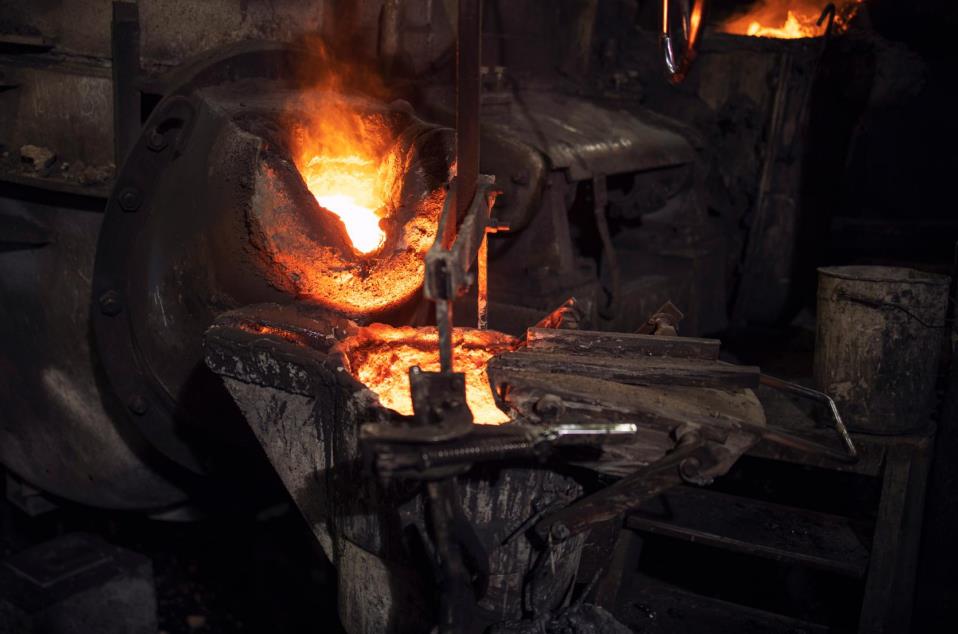
Making a cast iron skillet starts with acquiring the material. If you ever ask what cast iron skillets are made of – that is the material: cast iron.
Manufacturers begin the casting process by melting a combination of metals. These are as follows.
- Pig iron
- Steel
- Previous castings with defects
Pig iron is critical for any cast iron product. It gives the metal its heat retention abilities. Steel is for managing carbon levels and increasing malleability. The manufacturer can change the combinations to convey the desired properties to the metal. Manufacturers can also add silicon to change the properties.
Melting
Once the materials are gathered, they go into the furnaces to melt. There are a variety of furnaces for melting that are used differently at different scales.
Induction furnaces are one of the most effective types for melting large batches of metals. These furnaces work similarly to the induction stovetops at homes. They use the magnetic field as a heat source. They can melt more than a ton of metal in an hour or so, making them ready for the processes.
Once the metal is molten, it doesn’t immediately become ready for the next step. The impurities in the metals, such as sand from the previous molds and rust, float to the top during the melting process. This enables manufacturers to remove the impurities by scooping them from the molten metal. It can be a worker with a rod that takes them over the furnace or an automated robot that clasps onto everything. The furnace size and manufacturer’s capabilities determine how the impurities are removed.
After the molten metal is free of impurities, it is ready for the molding process, which shapes it into a skillet.
Molding
The molten metal is about 2,500ºF at this point. Because it is too hot, manufacturers can utilize a limited number of materials to create molds. Sand is the most common – and perhaps the most efficient material for cast iron molds. It requires 3,100ºF to turn into glass – at the perfect melting point to make cast iron molds.
Additionally, the high temperature of molten metal doesn’t harm the sand. This allows manufacturers to reuse it to make new molds. The sand used for making cast iron is much finer than typical sand and is specifically produced for molding.
The cast iron skillet molds are two-sided. One half shapes the bottom, and the other half creates the top. They close up and give way for molten metal to be poured in through an opening.
Pouring
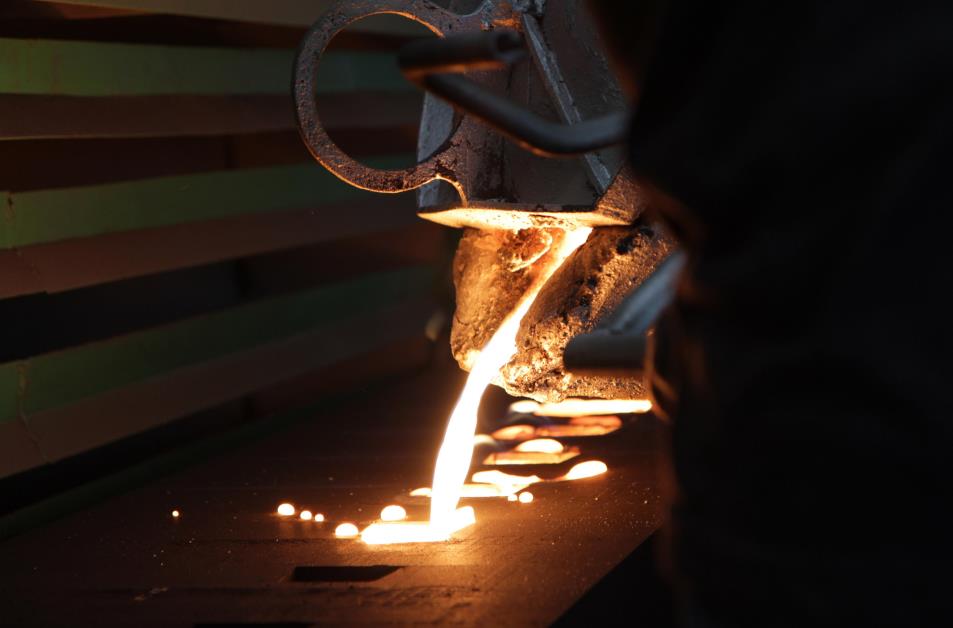
The molten metal is now ready to be poured into the mold. The pouring process is crucial. It can give you the product you want or force you to repeat everything. The pouring speed must be controlled. If the molten metal is poured in too slowly, the metal will solidify before it fills the mold. If too fast, there will be turbulence, and the surface finish will be affected.
Large manufacturers, like Lodge Cast Iron, do the pouring with automated machines that check everything from speed to temperature to pouring angle. Others making cast iron skillets by hand or limited means learn it through years of experience.
Once the molten metal fills the mold, it cools and gets the desired shape. The mold is then transferred into a shakeout unit that disintegrates the sand for reuse. The ones that aren’t poured right can always be used to make new batches. The cast iron skillet is roughly finished and goes through the last process from there.
Finishing
The skillets that are cast need finishing before they are ready for use. There is sand from the molds and scraps from the molding process, which need to be removed. At this point, the cast iron skillet also has a rough surface. The manufacturer needs to grind the surface metal to expose a new one that hasn’t touched the sand.
Most manufacturers that run on a small to medium scale polish the surface using sandpaper and grinders. Those operating at large scales, such as Lodge Cast Iron, wash the skillets in a bath of soap and steel beads to clean and polish the surface.
After finishing, the skillets turn into a dark silverish color. They remain this way until the iron starts reacting with the environment.
Seasoning (optional)
Following all these steps, the cast iron skillet is ready for packaging. Some manufacturers choose to do the seasoning for their customers before packaging.
The seasoning process is critical for two things. It creates a non-stick layer to prevent foods from sticking and seals the raw iron to prevent rusting. Like cooks would season their cast iron skillets at home, manufacturers use oil to coat the skillet and heat. After this, the skillet is ready for packaging.
This is how cast iron cookware is made in today’s manufacturing. The process is the same, whether it be a Dutch oven, a skillet, or a griddle. The molten metal gets poured into a mold that shapes the end product. The rest is for cooks to enjoy and prepare tasty dishes.
Cast iron vs. enameled cast iron cookware
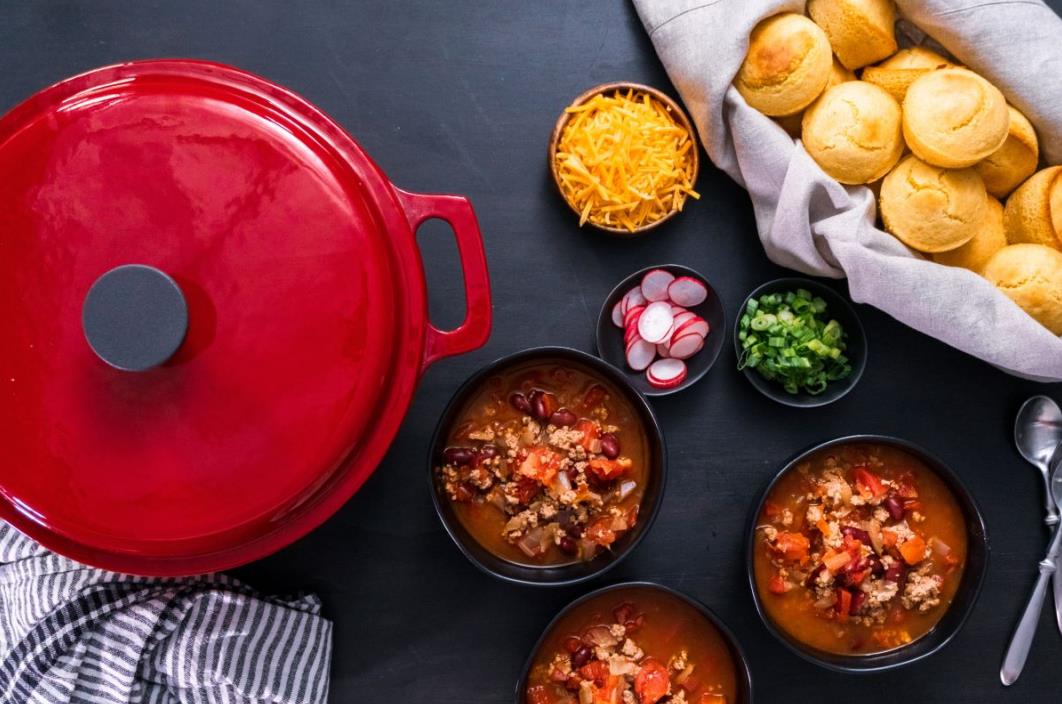
Enameled cast iron is the coated version of bare cast iron. The vitreous coating seals the raw iron and gives it non-stick properties similar to ceramic cookware. The enamel coating is like its own seasoning for the cast iron. This changes the cookware’s use as it no longer requires seasoning and becomes resistant to rust. However, it negatively impacts its heat conductivity and distribution.
Enameled cast iron can provide more value than bare cast iron for specific cooking purposes. It comes down to knowing the differences between the two.
Cast iron vs. cast aluminum cookware
Cast aluminum is different from the typical cookware produced from this metal. It isn’t cut from a single sheet of metal. It is cast, just like cast iron. This manufacturing process gives cast aluminum somewhat better qualities than the typical cookware made from it. However, it comes down to personal preferences as with all things kitchen-related.
Cast aluminum cookware holds heat well, gets hot quickly, and is affordable. Most turn to cast aluminum cookware for being inexpensive and light. The difference between cast iron and cast aluminum isn’t as vast, but there are key disparities that can be a big deal for cooks. For example, cast iron requires closer care.
Should you sell cast iron cookware?
Cast iron cookware has been at the center of cooking for centuries. Although non-stick and other corrosion-resistant materials stole the spotlight from it for a period, cast iron has prevailed.
Selling cast iron cookware is a must for any store that sells cookware or other cooking products. While some of your customers might not know what cast iron has to offer, cooking on a naturally non-stick surface that holds heat can benefit everyone.
Cooks favor this aspect of cast iron cookware the most and take pride in their cast iron skillets as they age. Once a cast iron skillet enters a kitchen, it has the potential to serve for life. Cast iron skillet sears and cook foods to perfection and is highly durable. These alone make it a must-have for any kitchen – and naturally for your store.
Source cookware from LeeKnives
LeeKnives can help you source cookware across multiple manufacturers. Although we only manufacture kitchen knives and cutting boards, we can connect with you leading cookware manufacturers in Yangjiang City, China.
From enameled cast iron Dutch ovens to elegant copper cookware, we can help you source wholesale products. Request a free quote today!
